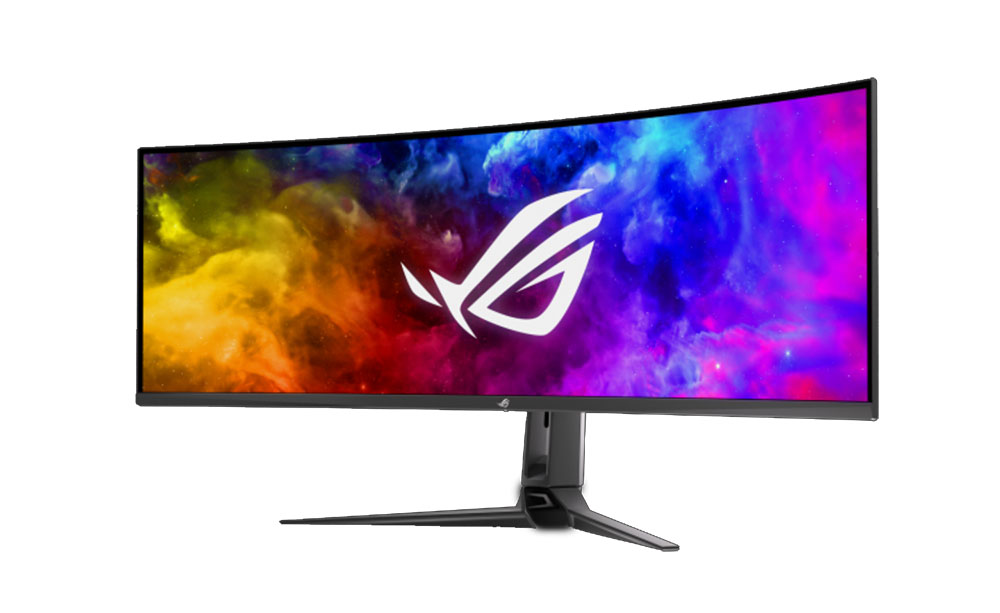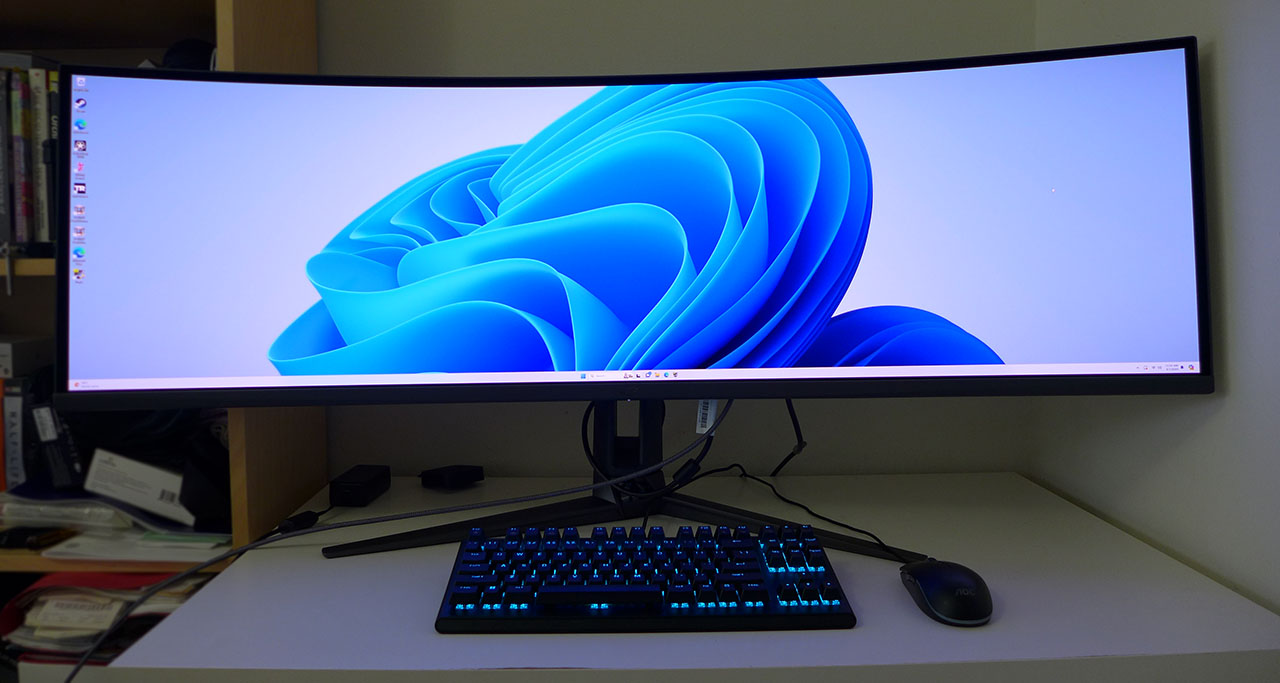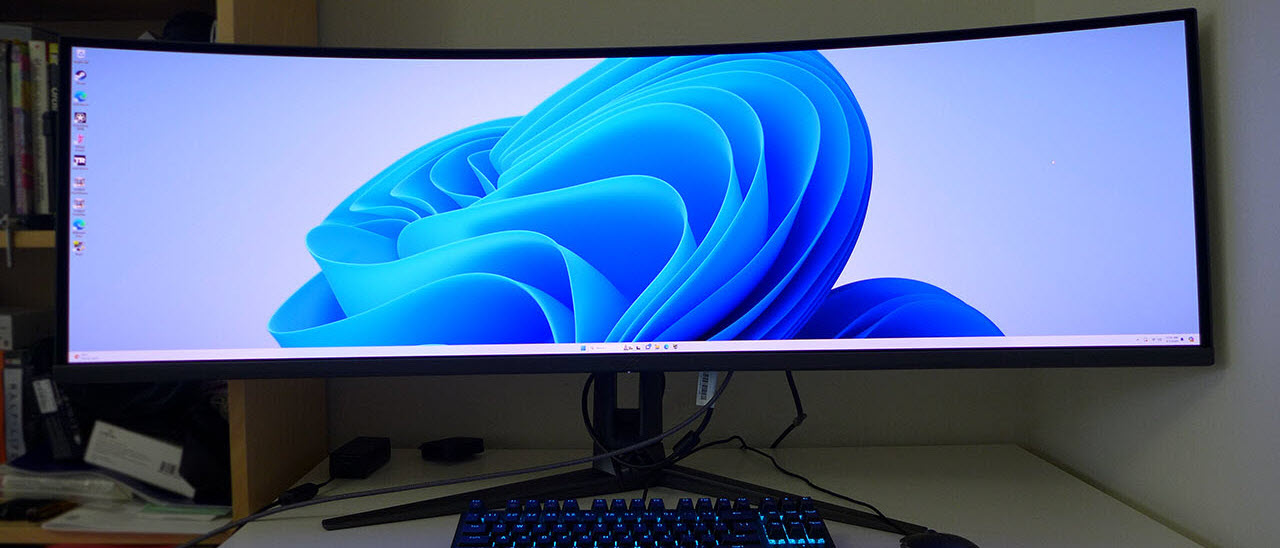Why you can trust Tom's Hardware
The question of whether to buy a 32:9 monitor comes down to, “Do I want to run two 27-inch QHD 16:9 screens?” If the answer is yes, a 49-inch panel with a reasonable curvature makes perfect sense. Pixel density is the same 109ppi and you get the same screen area with no dividing line. The only rub is that you’ll likely pay more for one 49-incher than two 27s. But if you’re talking about an OLED, then the price doesn’t matter. What?! The price doesn’t matter?! Once you’ve seen a good OLED in action, trust me, you won’t care how much it costs.

The Asus ROG Swift PG49WCD greatly improves over other 49-inch monitors that use IPS or VA panels. If you only consider the superior viewing angles, it’s a win. But add in the huge color gamut and near-perfect video processing and you’ll be hard pressed to choose another display to better fulfill your mega-wide dreams.
My only wish was for a faster refresh rate. After playing on 240 Hz OLEDs like Samsung’s G9, I discerned a small difference in movement accuracy. The PG49WCD is still incredibly smooth, but the G9 is just a tad better for hardcore gaming.

When considering image quality, nothing can compete with an OLED unless you really need 1,000 nits from a full-field white pattern. Only a Mini LED panel can currently achieve this feat. But if your room is free of the blinding sun, the PG49WCD has more than enough light output to make any user happy.
You can buy two 27-inch monitors or one 49-inch mega-wide. The Asus ROG Swift PG49WCD is the best one I’ve seen yet thanks to its stunning OLED panel. It does everything well and has no flaws of consequence. If you have the room and the budget, definitely check it out.
MORE: Best Gaming Monitors
MORE: How We Test PC Monitors

Christian Eberle is a Contributing Editor for Tom's Hardware US. He's a veteran reviewer of A/V equipment, specializing in monitors. Christian began his obsession with tech when he built his first PC in 1991, a 286 running DOS 3.0 at a blazing 12MHz. In 2006, he undertook training from the Imaging Science Foundation in video calibration and testing and thus started a passion for precise imaging that persists to this day. He is also a professional musician with a degree from the New England Conservatory as a classical bassoonist which he used to good effect as a performer with the West Point Army Band from 1987 to 2013. He enjoys watching movies and listening to high-end audio in his custom-built home theater and can be seen riding trails near his home on a race-ready ICE VTX recumbent trike. Christian enjoys the endless summer in Florida where he lives with his wife and Chihuahua and plays with orchestras around the state.
-
edzieba For OLED panels (or LCD panels with backlight modulation) it'd probably be better to chart grey contrast rather than black contrast - the ratio between the maximum and minimum possible nonzero illumination level. Black contrast with a panel that can turn off a pixel/zone for 0-level will always end up with a divide-by-zero issue and a completely worthless chart. Grey contract (full brightness over minimum displayable brightness) actually gives you a useful measure of real world contrast.Reply
e.g. a screen that can produce 0 nits at 0 input level, 1 nit at an input level of 1, and 1000 nits at an input level of 255, will have much higher perceptual contrast than a screen that will also produce 0 nits at 0 input level, but produces 50 nits at an input level of 1 and 1500 nits at an input level of 255.
The naïve max-brightness-over-zero-level charts are about as helpful as the old 'dynamic contrast' measures manufacturers liked to slap on monitors with backlight modulation (where a TN panel could magically produce a 80,000:1 contrast ratio). -
brandonjclark How would you compare this monitor on "versus" comparison, buy this or that, to the Dell Alienware AW3225QF, readers?Reply -
oofdragon Why these companies keep wasting time and resource launching these huge things not up to date with tech? 144hz is like 10 years ago literally, the minimum now is 240hz or gtfoReply -
subspruce Reply
also this monitor needs 2 people for transport, getting a friend (if you haven't already) or a partner will be a great move if you ever want to move house.oofdragon said:Why these companies keep wasting time and resource launching these huge things not up to date with tech? 144hz is like 10 years ago literally, the minimum now is 240hz or gtfo
